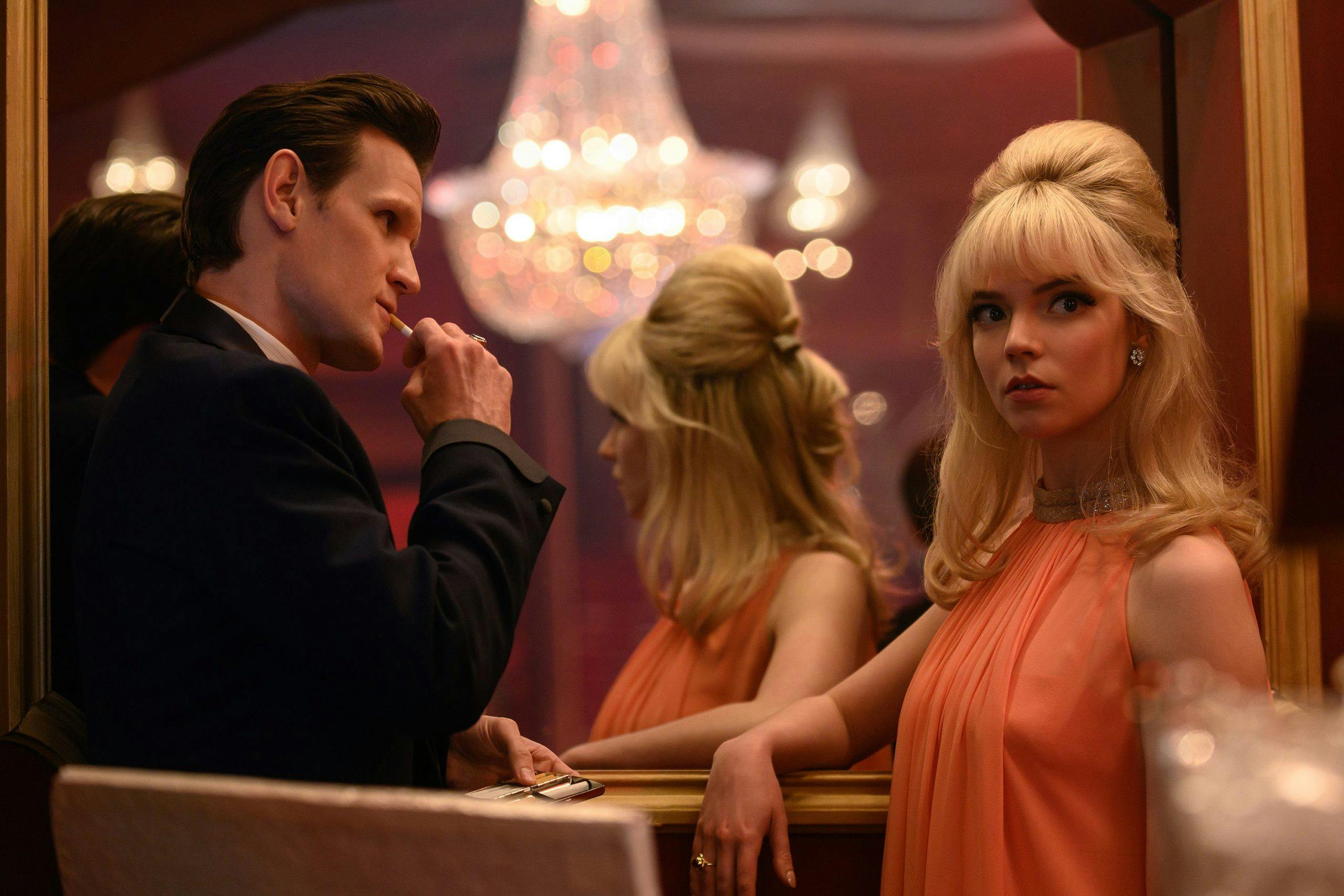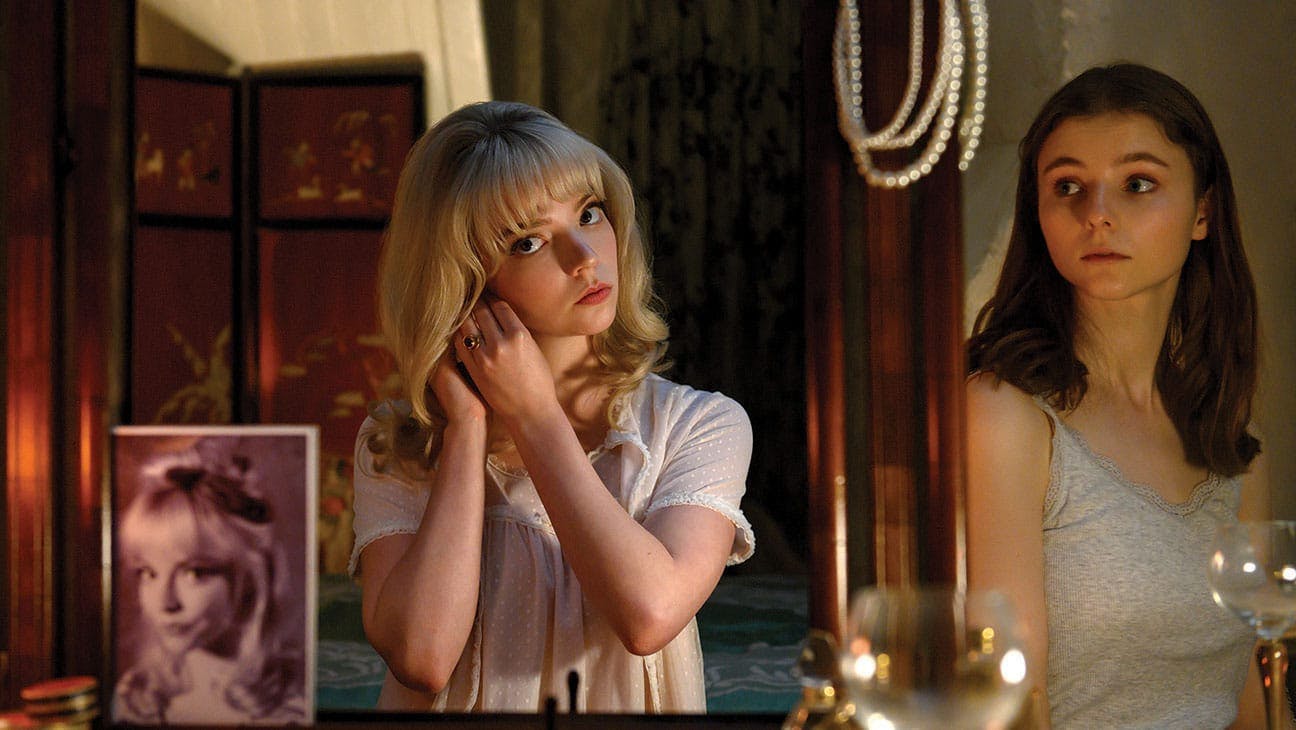Last Night In Soho Review: Edgar Wright Swings For The Fences In The Swinging Sixties

It sounds a bit fuddy-duddy these days, but when a movie arrives that isn’t a reboot, remake, prequel, sequel or superheroic… Well, we’ve got to give an original idea due credit. Last Night In Soho is the latest from director and co-writer Edgar Wright, who has been adept so far in treading the line between originality and nostalgia – bringing music to the fore and nodding towards genre films of the past with a spring in his step refreshingly free of studio meddling.
And while the review that follows may suggest otherwise: Last Night In Soho was an entertaining way to pass two hours. It was a kind of camp good time – if you don’t look too deeply past the beehives and neon and the Dusty Springfield of it all, you’re probably going to enjoy yourself, and (much like with his previous offerings) we’ve been playing the soundtrack on repeat all week.
The film follows Eloise, a young, aspiring fashion designer played by Thomasin McKenzie (most recognisable from her role in Jojo Rabbit). Freshly arrived from Cornwall, Eloise is eager to begin her studies at the London College of Fashion. She’s optimistic and naive, and upon her arrival is given a rude awakening to the city that her grandmother warned her about: her cabbie’s a creep, her roommate is a bully, and and her classmates – with the exception of John, genially played by an expressive Michael Ajao – are only too happy to join in on the mean-spirited jibes. She’s just not like everyone else, you see – she likes records, and wishes she was alive during the ’60s! All these terrible, streetwear-adorned youths just don’t understand!
Rather than her taste in music, her true difference is really her supernatural visions – which we’re made aware of from the get-go, with her long-dead mother appearing forlornly beside her in her bedroom mirror like a kind of depressive Mirror of Erised.

Overwhelmed by her partying dormmates, Eloise manages to find herself a new, suitably retro room – with a no-nonsense landlady played by the sparkling Diana Rigg in her final performance. Drenched in the flickering neon flooding through her window, her dreams transport her to the swinging sixties, and when she looks in the mirror it’s not her own face she sees, but the wide-eyed stare of aspiring singer Sandie (Anya Taylor-Joy), as she is seduced by her gangster manager Jack (Matt Smith). She is at once participant and voyeur, sometimes in Sandie’s body and sometimes spectating – but when a hickey appears on her neck in her waking life, the line between dreams and reality blur even further.
Even without their connection in dreams, Sandie and Eloise’s experiences are mirrored, with the film drawing clear parallels between the leering men who victimise Sandie in the ’60s, and in Eloise’s interactions in contemporary London. It is unsatisfying, though, that both women are given such paltry characterisations. Eloise – our protagonist! – is a fashion student, yet seemingly pays no attention to the fashion in her dreams – with the exception of creating a replica of Sandie’s dress and buying a white PVC coat. Who is this girl? If ’60s fashion is her only interest, why does she seem so… disinterested in it? Similarly, Taylor-Joy is seemingly relegated to looking cute in a shift dress and winged liner (albeit channeling some of her Queen’s Gambit, drunk-and-troubled dance moves). At the other end of the spectrum, her classmates are so cartoonish in their antics, you can’t help but feel like you’re watching an episode of Riverdale. Unfortunately, the end result is that no character really feels like a real person – so what does it matter? (This is not helped by the ease with which the women’s shared traumas are ultimately brushed over.)
Without stepping into spoiler territory, the film’s climax warranted some eye brow raising, rather than hair raising (with some apparitions that would be more at home on Doctor Who) and it leaves the viewer ultimately unsatisfied. Its aesthetic references to ’60s thrillers – with many parallels being drawn to 1965’s Repulsion, and a certain kinship to 1977’s Suspiria – are perhaps where the film’s strengths lay. Disappointingly, though, it’s neither here nor there: not aesthetically striking enough to warrant its threadbare characterisations, but it’s also not brave enough in its narrative to truly delve into the issues it tiptoes around.
–
Images courtesy Focus Features